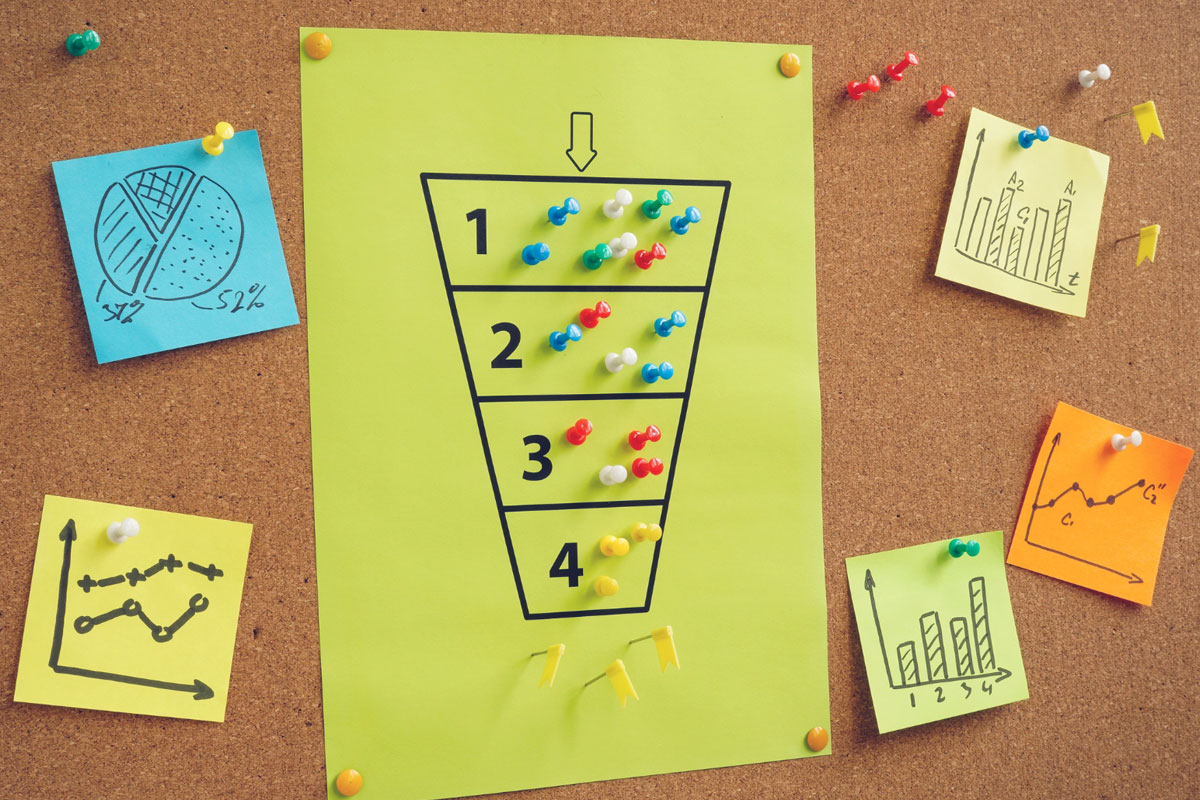
To ensure the effectiveness of your digital marketing funnel, it is crucial to measure and analyze performance at each stage. Let’s explore the importance of data-driven decision-making, discuss essential tools and techniques for tracking funnel metrics, and provide real-world examples of how data analysis can drive improvements.
Introduction to Funnel Performance Measurement
Definition and Purpose Funnel performance measurement involves tracking and analyzing key metrics at each stage of the funnel to assess the effectiveness of your marketing strategies. The purpose is to identify areas of improvement, optimize the customer journey, and ultimately increase conversions and revenue.
Importance of Data-Driven Decision-Making Data-driven decision-making is essential for optimizing your digital marketing funnel. By relying on data and analytics, you can make informed decisions, identify bottlenecks, and implement targeted improvements that enhance overall performance.
Tools and Techniques for Tracking Funnel Metrics
Overview of Essential Tools
- Google Analytics: Provides insights into website traffic, user behavior, and conversion rates.
- Customer Relationship Management (CRM) Systems: Track lead interactions, sales activities, and customer data.
- Marketing Automation Platforms: Automate and measure the effectiveness of email campaigns, social media, and other marketing efforts.
- Business Intelligence (BI) Tools: Analyze and visualize data to identify trends and patterns.
Techniques for Data Collection and Analysis
- Setting Up Goals and Events: Define specific actions you want to track (e.g., form submissions, downloads) and set up goals in your analytics tools.
- Segmentation: Divide your audience into segments based on demographics, behavior, or other criteria to gain deeper insights.
- A/B Testing: Experiment with different variations of your marketing campaigns to determine which performs best.
- Cohort Analysis: Analyze groups of users who share common characteristics to identify patterns over time.
Key Performance Indicators (KPIs) for Funnel Stages
TOFU (Awareness)
- Impressions: Number of times content is displayed.
- Click-through Rate (CTR): Percentage of people who click on a link.
- Website Traffic: Number of visitors to your website.
MOFU (Consideration)
- Lead Engagement: Interactions with emails, content, and ads.
- Conversion Rate: Percentage of leads moving to the next funnel stage.
- Webinar Attendance: Number of leads attending webinars and events.
BOFU (Conversion)
- Conversion Rate: Percentage of leads converting to customers.
- Sales Revenue: Total revenue generated from conversions.
- Free Trial Sign-ups: Number of users signing up for free trials.
Post-Funnel (Retention)
- Customer Retention Rate: Percentage of customers who continue to purchase.
- Customer Lifetime Value (CLV): Total revenue generated from a customer over time.
- Net Promoter Score (NPS): Measure of customer satisfaction and loyalty.
How to Measure and Track These KPIs
- Use analytics tools to track website traffic, CTR, and conversion rates.
- Implement CRM systems to monitor lead engagement, conversion rates, and sales revenue.
- Utilize marketing automation platforms to measure email engagement and webinar attendance.
- Conduct customer surveys and use feedback tools to track NPS and customer satisfaction.
Interpreting Funnel Data
Analyzing Data to Identify Trends and Patterns
- Look for trends in traffic, engagement, and conversion rates over time.
- Identify which marketing channels and campaigns are driving the most leads and conversions.
- Analyze customer behavior to understand pain points and opportunities for improvement.
Common Pitfalls and How to Avoid Them
- Overlooking Data Quality: Ensure data accuracy by regularly auditing your tracking and analytics setup.
- Ignoring Segmentation: Analyze data by segments to gain more actionable insights.
- Focusing Only on Vanity Metrics: Prioritize metrics that directly impact your business goals.
Examples of Data-Driven Improvements
Case Study 1: Spotify’s Personalized Playlists Spotify uses data analysis to create personalized playlists for its users. By analyzing listening habits and preferences, Spotify delivers highly relevant content, resulting in increased user engagement and retention.
Case Study 2: Airbnb’s Dynamic Pricing Airbnb employs data-driven dynamic pricing to optimize rental rates. By analyzing market demand, seasonality, and competitor pricing, Airbnb adjusts prices in real-time, leading to higher occupancy rates and revenue.
Analysis of Success Factors
- Leveraging data to personalize user experiences and content
- Continuously monitoring and adjusting strategies based on data insights
- Implementing automated systems to analyze and act on data in real-time
Information Table on Overall Funnel Performance Metrics
| Key Performance Indicator | Definition | How to Measure |
|---|---|---|
| Funnel Conversion Rate | Percentage of leads moving through each funnel stage | CRM systems, analytics tools |
| Customer Lifetime Value (CLV) | Total revenue generated from a customer over time | Financial analysis, CRM systems |
| Lead Response Time | Time taken to respond to new leads | CRM systems, sales tracking software |
| Customer Satisfaction (CSAT) | Measure of customer satisfaction with your brand | Customer surveys, feedback tools |
| Return on Investment (ROI) | Measure of profitability from marketing efforts | Financial analysis, marketing analytics |
In the next article, we will explore common challenges and solutions in digital marketing funnels, focusing on identifying and addressing bottlenecks, and providing case studies of troubleshooting funnel issues.

